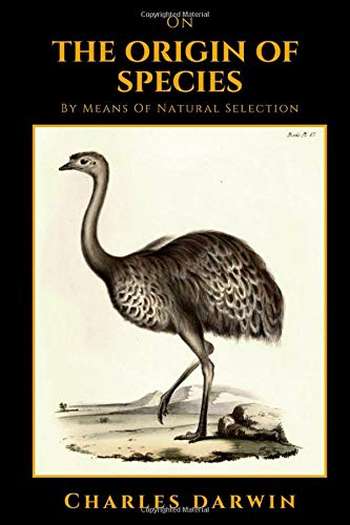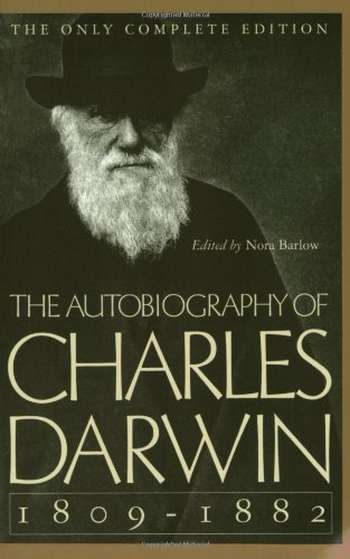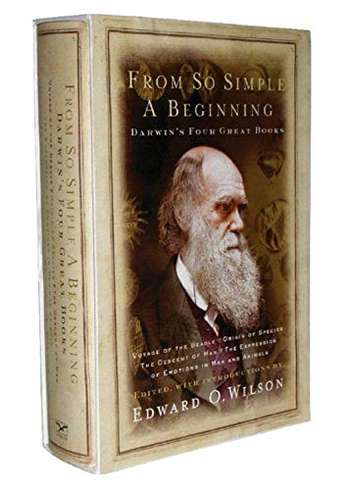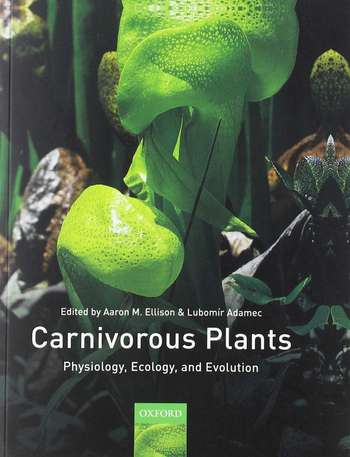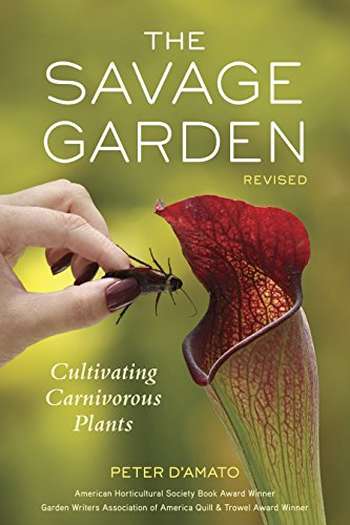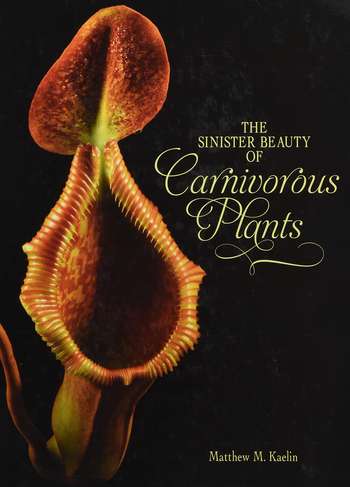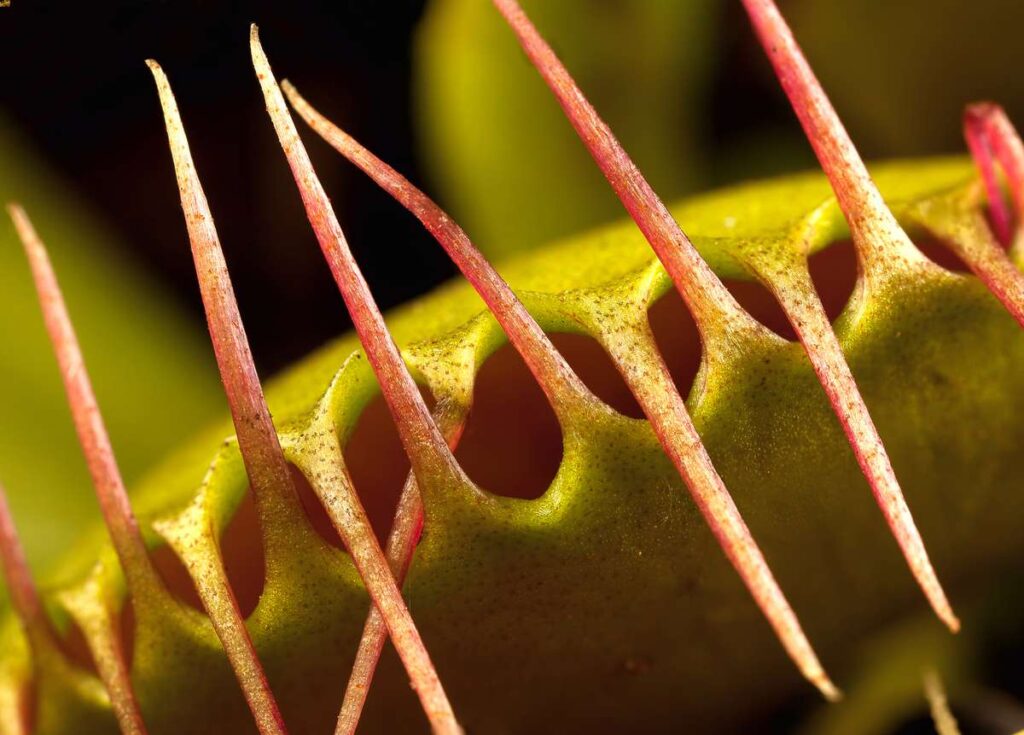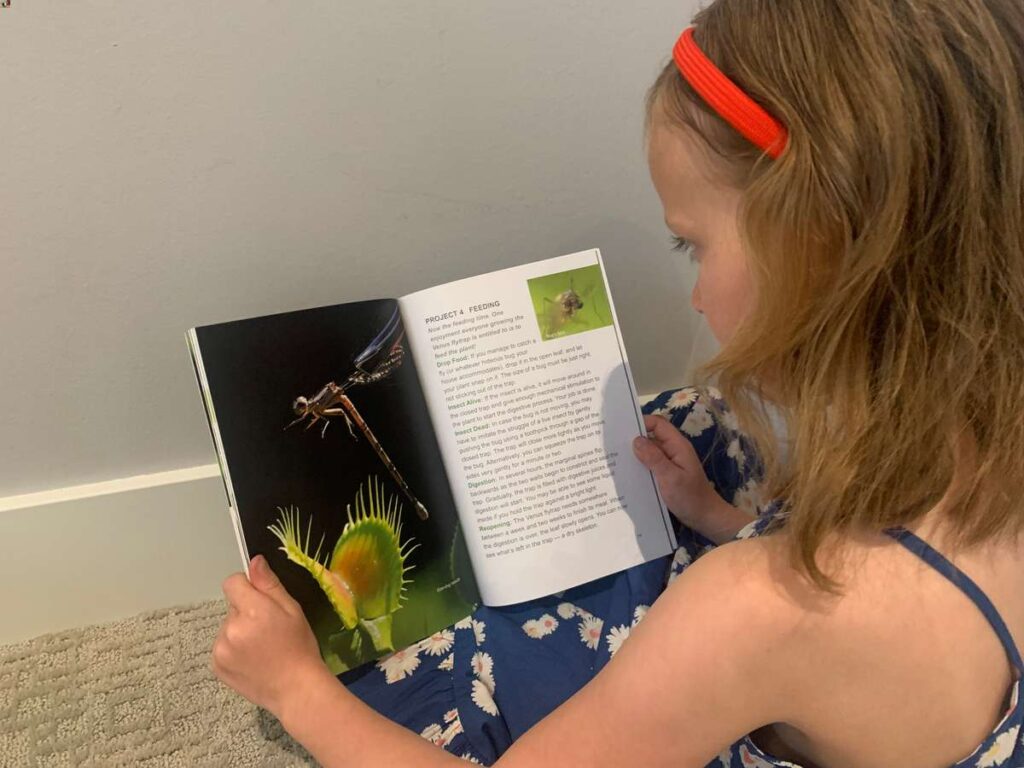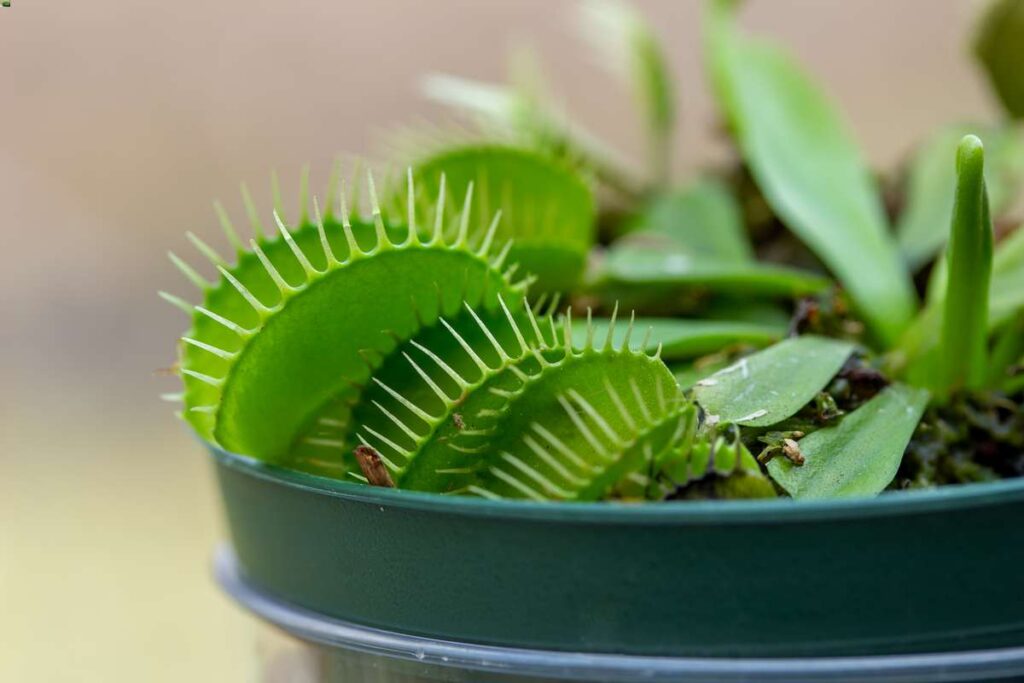Welcome carnivorous plant fans! This free, illustrated version of Chapter 5 of Insectivorous Plants by Charles Darwin has been lightly edited to be more internet friendly. The main text of Chapter 5 of Insectivorous Plants is presented here in its entirety; we have simply removed some of the table of contents material, created more white space for easier reading, added a color picture or two, etc.
We hope you enjoy this free, online version of the Charles Darwin book Insectivorous Plants, Chapter 5.
This post contains compensated links.
CHAPTER V
THE EFFECTS OF NON-NITROGENOUS AND NITROGENOUS ORGANIC FLUIDS ON THE LEAVES
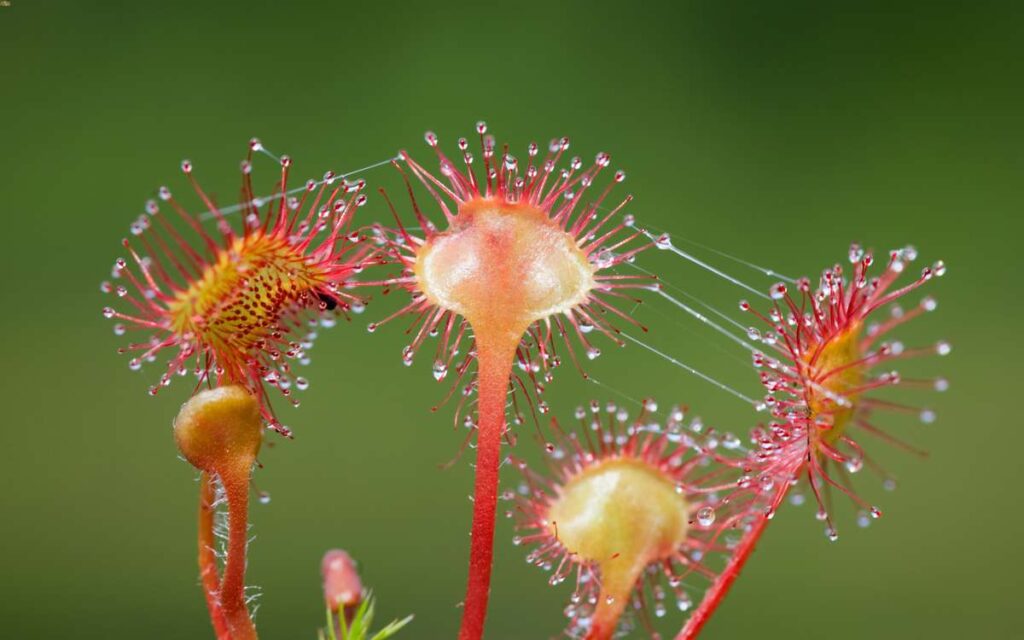
Insectivorous Plants – Chapter 5 Topics:
- Non-nitrogenous fluids
- Solutions of gum arabic
- Sugar
- Starch
- Diluted alcohol
- Olive oil
- Infusion and decoction of tea
- Nitrogenous fluids
- Milk
- Urine
- Liquid albumen
- Infusion of raw meat
- Impure mucus
- Saliva
- Solution of isinglass
- Difference in the action of these two sets of fluids
- Decoction of green peas
- Decoction and infusion of cabbage
- Decoction of grass leaves.
WHEN, in 1860, I first observed Drosera, and was led to believe that the leaves absorbed nutritious matter from the insects which they captured, it seemed to me a good plan to make some preliminary trials with a few common fluids, containing and not containing nitrogenous matter; and the results are worth giving.
In all the following cases a drop was allowed to fall from the same pointed instrument on the centre of the leaf; and by repeated trials one of these drops was ascertained to be on an average very nearly half a minim, or 1/960 of a fluid ounce, or .0295 ml.
But these measurements obviously do not pretend to any strict accuracy; moreover, the drops of the viscid fluids were plainly larger than those of water. Only one leaf on the same plant was tried, and the plants were collected from two distant localities. The experiments were made during August and September.
In judging of the effects, one caution is necessary: if a drop of any adhesive fluid is placed on an old or feeble leaf, the glands of which have ceased to secrete copiously, the drop sometimes dries up, especially if the plant is kept in a room, and some of the central and submarginal tentacles are thus drawn together, giving to them the false appearance of having become inflected.
This sometimes occurs with water, as it is rendered adhesive by mingling with the viscid secretion. Hence the only safe criterion, and to this alone I have trusted, is the bending inwards of the exterior tentacles, which have not been touched by the fluid, or at most only at their bases. In this case the movement is wholly due to the central glands having been stimulated by the fluid, and transmitting a motor impulse to the exterior tentacles.
The blade of the leaf likewise often curves inwards, in the same manner as when an insect or bit of meat is placed on the disc. This latter movement is never caused, as far as I have seen, by the mere drying up of an adhesive fluid and the consequent drawing together of the tentacles.
First for the non-nitrogenous fluids. As a preliminary trial, drops of distilled water were placed on between thirty and forty leaves, and no effect whatever was produced; nevertheless, in some other and rare cases, a few tentacles became for a short time inflected; but this may have been caused by the glands having been accidentally touched in getting the leaves into a proper position. That water should produce no effect might have been anticipated, as otherwise the leaves would have been excited into movement by every shower of rain.
Gum arabic
Solutions of four degrees of strength were made; one of six grains to the ounce of water (one part to 73); a second rather stronger, yet very thin; a third moderately thick, and a fourth so thick that it would only just drop from a pointed instrument. These were tried on fourteen leaves; the drops being left on the discs from 24 hrs. to 44 hrs.; generally about 30 hrs. Inflection was never thus caused.
It is necessary to try pure gum arabic, for a friend tried a solution bought ready prepared, and this caused the tentacles to bend; but he afterwards ascertained that it contained much animal matter, probably glue.
Sugar
Drops of a solution of white sugar of three strengths (the weakest containing one part of sugar to 73 of water) were left on fourteen leaves from 32 hrs. to 48 hrs.; but no effect was produced.
Starch
A mixture about as thick as cream was dropped on six leaves and left on them for 30 hrs., no effect being produced. I am surprised at this fact, as I believe that the starch of commerce generally contains a trace of gluten, and this nitrogenous substance causes inflection, as we shall see in the next chapter.
Alcohol, Diluted
One part of alcohol was added to seven of water, and the usual drops were placed on the discs of three leaves. No inflection ensued in the course of 48 hrs. To ascertain whether these leaves had been at all injured, bits of meat were placed on them, and after 24 hrs. they were closely inflected.
I also put drops of sherry-wine on three other leaves; no inflection was caused, though two of them seemed somewhat injured. We shall hereafter see that cut off leaves immersed in diluted alcohol of the above strength do not become inflected.
Olive Oil
Drops were placed on the discs of eleven leaves, and no effect was produced in from 24 hrs. to 48 hrs. Four of these leaves were then tested by bits of meat on their discs, and three of them were found after 24 hrs. with all their tentacles and blades closely inflected, whilst the fourth had only a few tentacles inflected. It will, however, be shown in a future place, that cut off leaves immersed in olive oil are powerfully affected.
Infusion and Decoction of Tea
Drops of a strong infusion and decoction, as well as of a rather weak decoction, of tea were placed on ten leaves, none of which became inflected. I afterwards tested three of them by adding bits of meat to the drops which still remained on their discs, and when I examined them after 24 hrs. they were closely inflected.
The chemical principle of tea, namely theine, was subsequently tried and produced no effect. The albuminous matter which the leaves must originally have contained, no doubt, had been rendered insoluble by their having been completely dried.
We thus see that, excluding the experiments with water, sixty-one leaves were tried with drops of the above-named non-nitrogenous fluids; and the tentacles were not in a single case inflected.
With respect to nitrogenous fluids, the first which came to hand were tried. The experiments were made at the same time and in exactly the same manner as the foregoing. As it was immediately evident that these fluids produced a great effect, I neglected in most cases to record how soon the tentacles became inflected.
But this always occurred in less than 24 hrs.; whilst the drops of non-nitrogenous fluids which produced no effect were observed in every case during a considerably longer period.
Milk
Drops were placed on sixteen leaves, and the tentacles of all, as well as the blades of several, soon became greatly inflected. The periods were recorded in only three cases, namely, with leaves on which unusually small drops had been placed.
Their tentacles were somewhat inflected in 45 m.; and after 7 hrs. 45 m. the blades of two were so much curved inwards that they formed little cups enclosing the drops. These leaves re-expanded on the third day. On another occasion the blade of a leaf was much inflected in 5 hrs. after a drop of milk had been placed on it.
Human Urine
Drops were placed on twelve leaves, and the tentacles of all, with a single exception, became greatly inflected. Owing, I presume, to differences in the chemical nature of the urine on different occasions, the time required for the movements of the tentacles varied much, but was always effected in under 24 hrs.
In two instances I recorded that all the exterior tentacles were completely inflected in 17 hrs., but not the blade of the leaf. In another case the edges of a leaf, after 25 hrs. 30 m., became so strongly inflected that it was converted into a cup. The power of urine does not lie in the urea, which, as we shall hereafter see, is inoperative.
Albumen (fresh from a hen’s egg)
Placed on seven leaves, caused the tentacles of six of them to be well inflected. In one case the edge of the leaf itself became much curled in after 20 hrs. The one leaf which was unaffected remained so for 26 hrs., and was then treated with a drop of milk, and this caused the tentacles to bend inwards in 12 hrs.
Cold Filtered Infusion of Raw Meat
This was tried only on a single leaf, which had most of its outer tentacles and the blade inflected in 19 hrs. During subsequent years, I repeatedly used this infusion to test leaves which had been experimented on with other substances, and it was found to act most energetically, but as no exact account of these trials was kept, they are not here introduced.
Mucus
Thick and thin mucus from the bronchial tubes, placed on three leaves, caused inflection. A leaf with thin mucus had its marginal tentacles and blade somewhat curved inward in 5 hrs. 30 m., and greatly so in 20 hrs. The action of this fluid no doubt is due either to the saliva or to some albuminous matter* mingled with it, and not, as we shall see in the next chapter, to mucin or the chemical principle of mucus.
* Mucus from the air-passages is said in Marshall, ‘Outlines of Physiology,’ vol. ii. 1867, p. 364, to contain some albumen.
Saliva
Human saliva, when evaporated, yields ** from 1.14 to 1.19 per cent. of residue; and this yields 0.25 per cent. of ashes, so that the proportion of nitrogenous matter which saliva contains must be small. Nevertheless, drops placed on the discs of eight leaves acted on them all. In one case all the exterior tentacles, excepting nine, were inflected in 19 hrs. 30 m.; in another case a few became so in 2 hrs., and after 7 hrs. 30 m. all those situated near where the drop lay, as well as the blade, were acted on.
** Muller’s ‘Elements of Physiology,’ Eng. Trans. vol. i., p. 514.
Since making these trials, I have many scores of times just touched glands with the handle of my scalpel wetted with saliva, to ascertain whether a leaf was in an active condition; for this was shown in the course of a few minutes by the bending inwards of the tentacles.
The edible nest of the Chinese swallow is formed of matter secreted by the salivary glands; two grains were added to one ounce of distilled water (one part to 218), which was boiled for several minutes, but did not dissolve the whole. The usual-sized drops were placed on three leaves, and these in 1 hr. 30 m. were well, and in 2 hrs. 15 m. closely, inflected.
Isinglass
Drops of a solution about as thick as milk, and of a still thicker solution, were placed on eight leaves, and the tentacles of all became inflected. In one case the exterior tentacles were well curved in after 6 hrs. 30 m., and the blade of the leaf to a partial extent after 24 hrs. As saliva acted so efficiently, and yet contains so small a proportion of nitrogenous matter, I tried how small a quantity of isinglass would act.
One part was dissolved in 218 parts of distilled water, and drops were placed on four leaves. After 5 hrs. two of these were considerably and two moderately inflected; after 22 hrs. the former were greatly and the latter much more inflected. In the course of 48 hrs. from the time when the drops were placed on the leaves, all four had almost re-expanded.
They were then given little bits of meat, and these acted more powerfully than the solution. One part of isinglass was next dissolved in 437 of water; the fluid thus formed was so thin that it could not be distinguished from pure water. The usual-sized drops were placed on seven leaves, each of which thus received 1/960 of a grain (.0295 mg.).
Three of them were observed for 41 hrs., but were in no way affected; the fourth and fifth had two or three of their exterior tentacles inflected after 18 hrs.; the sixth had a few more; and the seventh had in addition the edge of the leaf just perceptibly curved inwards. The tentacles of the four latter leaves began to re-expand after an additional interval of only 8 hrs.
Hence the 1/960 of a grain of isinglass is sufficient to affect very slightly the more sensitive or active leaves. On one of the leaves, which had not been acted on by the weak solution, and on another, which had only two of its tentacles inflected, drops of the solution as thick as milk were placed; and next morning, after an interval of 16 hrs., both were found with all their tentacles strongly inflected.
Altogether I experimented on sixty-four leaves with the above nitrogenous fluids, the five leaves tried only with the extremely weak solution of isinglass not being included, nor the numerous trials subsequently made, of which no exact account was kept. Of these sixty-four leaves, sixty-three had their tentacles and often their blades well inflected.
The one which failed was probably too old and torpid. But to obtain so large a proportion of successful cases, care must be taken to select young and active leaves. Leaves in this condition were chosen with equal care for the sixty-one trials with non-nitrogenous fluids (water not included); and we have seen that not one of these was in the least affected.
We may therefore safely conclude that in the sixty-four experiments with nitrogenous fluids the inflection of the exterior tentacles was due to the absorption of nitrogenous matter by the glands of the tentacles on the disc.
Some of the leaves which were not affected by the non-nitrogenous fluids were, as above stated, immediately afterwards tested with bits of meat, and were thus proved to be in an active condition. But in addition to these trials, twenty-three of the leaves, with drops of gum, syrup, or starch, still lying on their discs, which had produced no effect in the course of between 24 hrs. and 48 hrs., were then tested with drops of milk, urine, or albumen.
Of the twenty-three leaves thus treated, seventeen had their tentacles, and in some cases their blades, well inflected; but their powers were somewhat impaired, for the rate of movement was decidedly slower than when fresh leaves were treated with these same nitrogenous fluids. This impairment, as well as the insensibility of six of the leaves, may be attributed to injury from exosmose, caused by the density of the fluids placed on their discs.
[The results of a few other experiments with nitrogenous fluids may be here conveniently given. Decoctions of some vegetables, known to be rich in nitrogen, were made, and these acted like animal fluids. Thus, a few green peas were boiled for some time in distilled water, and the moderately thick decoction thus made was allowed to settle.
Drops of the superincumbent fluid were placed on four leaves, and when these were looked at after 16 hrs., the tentacles and blades of all were found strongly inflected. I infer from a remark by Gerhardt* that legumin is present in peas “in combination with an alkali, forming an incoagulable solution,” and this would mingle with boiling water.
* Watts’ ‘Dictionary of Chemistry,’ vol. iii., p. 568.
I may mention, in relation to the above and following experiments, that according to Schiff** certain forms of albumen exist which are not coagulated by boiling water, but are converted into soluble peptones.
** ‘Leons sur la Phys. de la Digestion,’ tom. i, p. 379; tom. ii. pp. 154, 166, on legumin.
On three occasions chopped cabbage-leaves* were boiled in distilled water for 1 hr. or for 1 1/4 hr.; and by decanting the decoction after it had been allowed to rest, a pale dirty green fluid was obtained. The usual-sized drops were placed on thirteen leaves.
* The leaves of young plants, before the heart is formed, such as were used by me, contain 2.1 per cent. of albuminous matter, and the outer leaves of mature plants 1.6 per cent. Watts’ ‘Dictionary of Chemistry,’ vol. i. p. 653.
Their tentacles and blades were inflected after 4 hrs. to a quite extraordinary degree. Next day the protoplasm within the cells of the tentacles was found aggregated in the most strongly marked manner. I also touched the viscid secretion round the glands of several tentacles with minute drops of the decoction on the head of a small pin, and they became well inflected in a few minutes.
The fluid proving so powerful, one part was diluted with three of water, and drops were placed on the discs of five leaves; and these next morning were so much acted on that their blades were completely doubled over. We thus see that a decoction of cabbage-leaves is nearly or quite as potent as an infusion of raw meat.
About the same quantity of chopped cabbage-leaves and of distilled water, as in the last experiment, were kept in a vessel for 20 hrs. in a hot closet, but not heated to near the boiling-point. Drops of this infusion were placed on four leaves. One of these, after 23 hrs., was much inflected; a second slightly; a third had only the submarginal tentacles inflected; and the fourth was not at all affected.
The power of this infusion is therefore very much less than that of the decoction; and it is clear that the immersion of cabbage-leaves for an hour in water at the boiling temperature is much more efficient in extracting matter which excites Drosera than immersion during many hours in warm water.
Perhaps the contents of the cells are protected (as Schiff remarks with respect to legumin) by the walls being formed of cellulose, and that until these are ruptured by boiling-water, but little of the contained albuminous matter is dissolved. We know from the strong odour of cooked cabbage-leaves that boiling water produces some chemical change in them, and that they are thus rendered far more digestible and nutritious to man. It is therefore an interesting fact that water at this temperature extracts matter from them which excites Drosera to an extraordinary degree.
Grasses contain far less nitrogenous matter than do peas or cabbages. The leaves and stalks of three common kinds were chopped and boiled for some time in distilled water. Drops of this decoction (after having stood for 24 hrs.) were placed on six leaves, and acted in a rather peculiar manner, of which other instances will be given in the seventh chapter on the salts of ammonia.
After 2 hrs. 30 m. four of the leaves had their blades greatly inflected, but not their exterior tentacles; and so it was with all six leaves after 24 hrs. Two days afterwards the blades, as well as the few submarginal tentacles which had been inflected, all re-expanded; and much of the fluid on their discs was by this time absorbed.
It appears that the decoction strongly excites the glands on the disc, causing the blade to be quickly and greatly inflected; but that the stimulus, differently from what occurs in ordinary cases, does not spread, or only in a feeble degree, to the exterior tentacles.
I may here add that one part of the extract of belladonna (procured from a druggist) was dissolved in 437 of water, and drops were placed on six leaves. Next day all six were somewhat inflected, and after 48 hrs. were completely re-expanded. It was not the included atropine which produced this effect, for I subsequently ascertained that it is quite powerless.
I also procured some extract of hyoscyamus from three shops, and made infusions of the same strength as before. Of these three infusions, only one acted on some of the leaves, which were tried. Though druggists believe that all the albumen is precipitated in the preparation of these drugs, I cannot doubt that some is occasionally retained; and a trace would be sufficient to excite the more sensitive leaves of Drosera.
More Chapters from Insectivorous Plants by Charles Darwin
Insectivorous Plants Table of Contents
Previous – Chapter 4: The Effects of Heat on the Leaves
Up next – Chapter 6: The Digestive Power of the Secretion of Drosera

